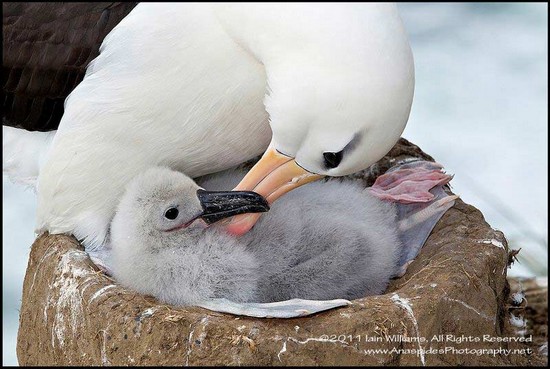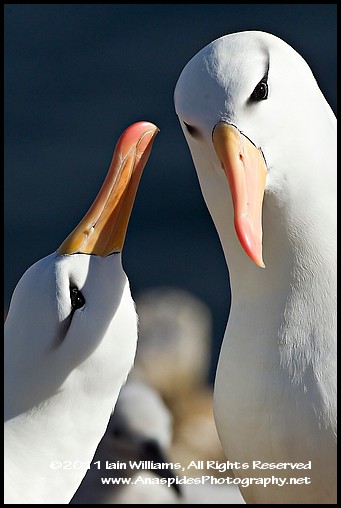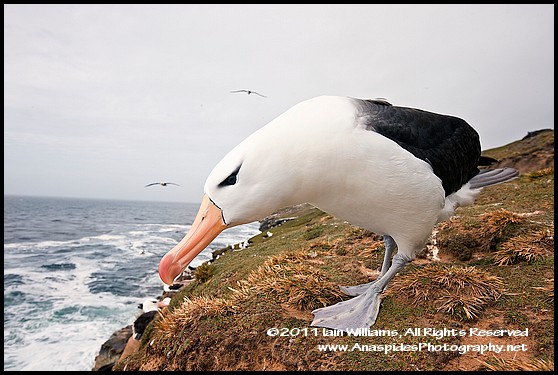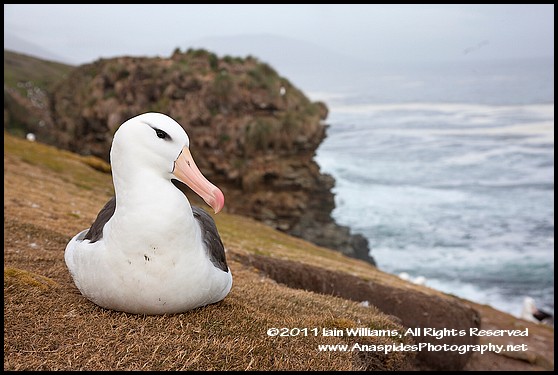Photographing Intimate Moments
 Wednesday, November 30, 2011 at 3:29PM
Wednesday, November 30, 2011 at 3:29PM  Photographs are “just photographs” unless they capture something special regarding the subject.
Photographs are “just photographs” unless they capture something special regarding the subject.
Left: A black-browed albatross (Diomedea melanophris) tends it's sole chick in the Falkland Islands.
In today’s digital world, there are so many images of animals that it’s easy to view images as a just another animal “snap”. To elevate your image to the next level you need to do something more than just being at the location for a fleeting moment and squeezing the shutter button. Certainly, a well lighted, technically correct and suitably composed photograph is several steps in the right direction, as is a rarely photographed animal. But, what can be done to separate your image from the rest of the crop.
I’ve discussed photographing defining moments in an earlier blog post, but what about intimate moments.
Intimacy
Capturing an intimate moment with wildlife is often serendipitous; however, knowing the behaviour of your target species is advantageous as it allows you (the photographer) to have a “somewhat slightly fractured” crystal ball to predict the behaviour that will occur. Although animals do alter their behaviour to changing environmental situations, they do not change their base behaviour. Spending as much time as possible with an animal will greatly increase your chance to observe differing behaviour and photograph, either a defining or intimate moment.
In this photograph of a Black-browed Albatross, the intimate behaviour is the subtle expression on the adult and chick’s face as they face each other in the nest. I waited for two hours on a cliff ledge in the Falkland Islands to be given the opportunity, to capture this connection between the chick and its parent. I have many “snaps” of albatross in similar positions with similar lighting, but the expression of intimacy portrayed in this image, is what separates it from the others.
Is the Intimate Connection Real?
Was there an actual connection between the chick and the parent? This is a difficult question to answer; it depends upon whether you believe animals’ have the ability to “feel” as humans do.
I rarely have anthropomorphic responses towards an animal’s behaviour, however, many individuals who view my images do. Therefore, photographing intimacy between animals is well worth the effort because it separates your photograph from the many hundreds of “snaps” already out there in the marketplace.
- Anthropomorphism is any attribution of human characteristics (or characteristics assumed to belong only to humans) to animals.





